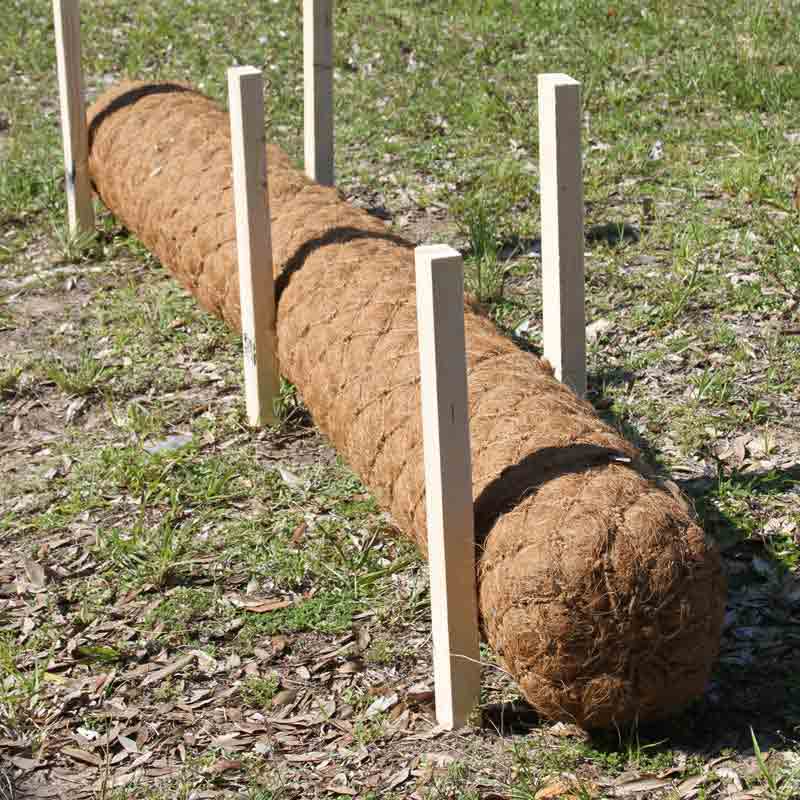Coir erosion wattles provide a dependable, environmentally responsible solution for sediment control and stormwater filtration. Designed for use in construction, landscaping, and public infrastructure projects, these wattles help prevent runoff from carrying sediment and debris into waterways. Each wattle is made from natural coconut fiber, offering biodegradable performance without introducing synthetic materials to the site. Because they naturally break down over time, coir wattles can remain in place long term, helping stabilize slopes, protect drains, and maintain compliance with environmental standards.
Coir fiber wattle is a recognized stormwater BMP and when applied properly is an affordable way to satisfy federal stormwater regulations. The coir fiber wattle is a practical sediment control solution for limited project budgets. It is used for preventative erosion control because of its ability to direct groundwater flow while effectively filtering out sediment. For applications where there may be pollutants other than just sediment in the runoff, you can keep the site compliant by pairing coir wattle with the use of absorbents or other treatments. Coir fiber wattles for sediment control applications typically remain effective for up to 24 months in the field, depending on water flow. Coir is relatively waterproof and is resistant to saltwater damage. Submersion does not cause quick degradation. For a 100% green BMP solution, use biodegradable stakes to anchor the coir wattle.





